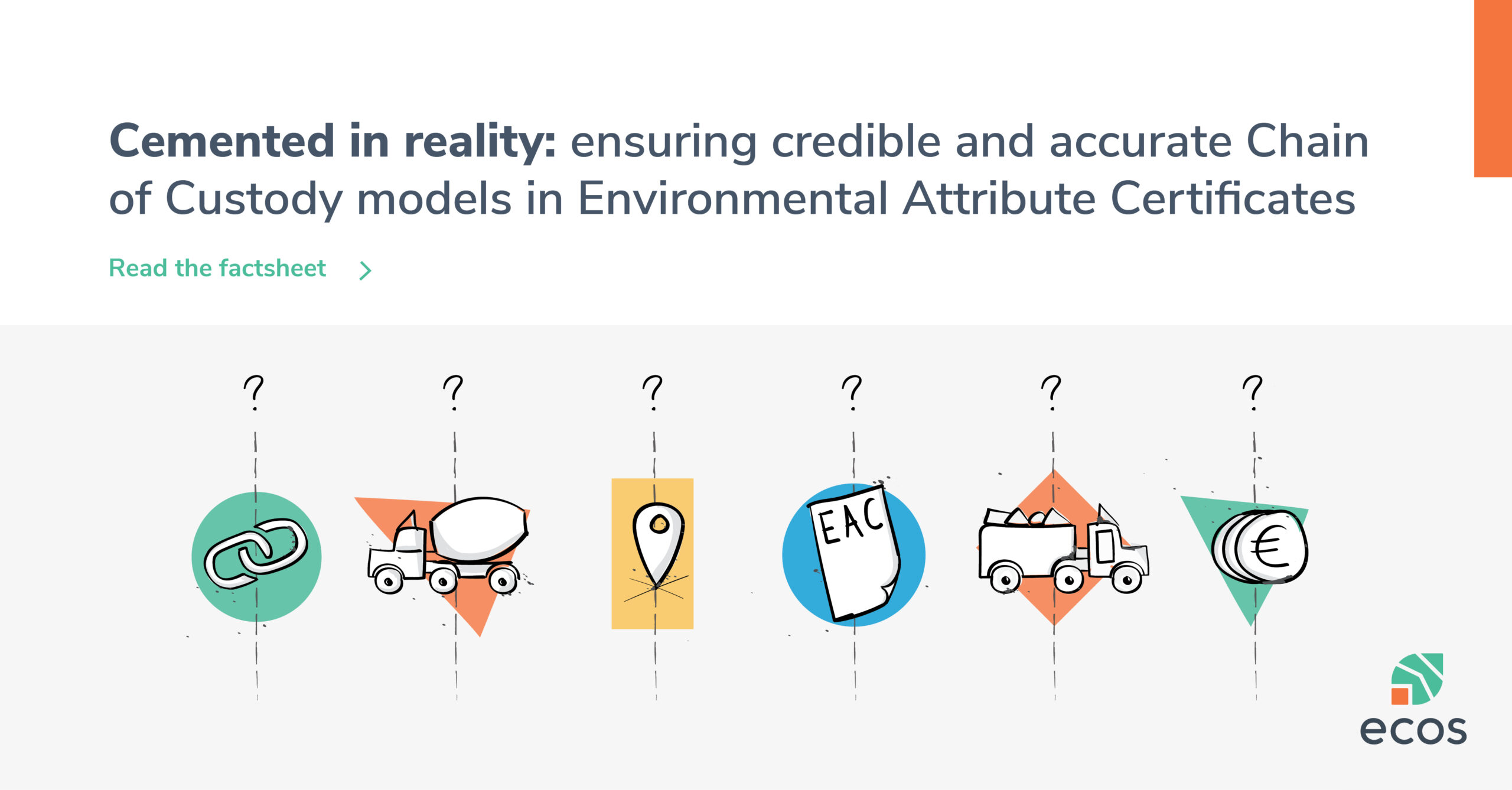Cemented in reality
Companies have a key role in tackling climate change by reducing their greenhouse gas emissions. Ensuring credible and accurate Chain of Custody models in Environmental Attribute Certificates is key to this.

Typically, most of a company’s emissions are indirect (known as Scope 3) – meaning they happen upstream in the supply chain or downstream, after the product is sold.
What are Environmental Attribute Certificates?
To show they are reducing their impact, companies sometimes use commodity Environmental Attribute Certificates (EACs). These certificates are supposed to tell how a product was made. For example, whether fewer emissions were produced by using renewable energy or recycled materials.
Where can they go wrong?
However, the reality is that when these certificates are based on Chain of Custody (CoC) models that are not credibly linked to the actual good being sold, they can enable greenwashing with inaccurate emissions accounting. This disadvantages companies truly reducing their emissions with competition from companies falsely claiming emissions reductions while inflating their green credentials and misleading purchasers.
Read our factsheet to learn more
For an EAC to be used correctly in Scope 3, it must use a Chain of Custody model that has a direct link between the product and the environmental claim. Read on and learn which Chain of Custody (CoC) models uphold these principles – and which ones fall short.
Download the document

